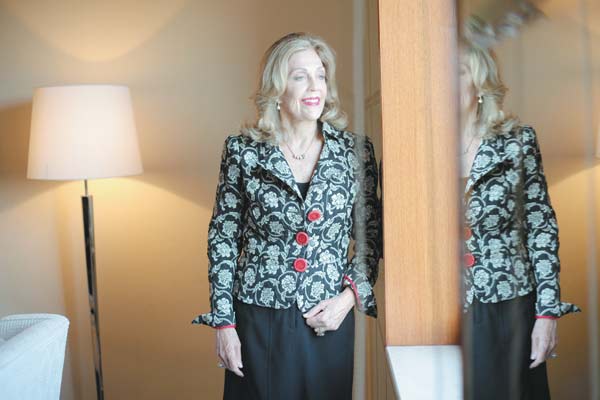Ancient artifacts, modern museum
Updated: 2013-06-09 03:27
By Peng Yining (China Daily)
|
|||||||||
"After 20 years of development we still have a lot to do, and it is a good chance to learn how to work in a museum, because it is a complex project requiring cooperation and joint efforts from teams of professionals from the US and China," Song said.
|
 |
|
Jill Sackler has been supporting the museum since her husband passed away in 1987. |
Sponsored by the Arthur M. Sackler Foundation for Arts, Sciences and Humanities, Song went to the US to learn archaeology and museology in 1987. He said he was impressed by how much museums contribute to public education in the US. "It is all about knowledge, and sharing. People, especially children, can learn so much through an exhibition. They can watch, listen and even touch the objects to learn," he said.
Song said he was also impressed by how much the museums were involved in current affairs. "There were exhibitions about civil rights and women's rights. Instead of being just display places, museums in the US are alive and full of interaction," he said. "I wouldn't have learned all this if I didn't work for the AMS museum in PKU, and now we are trying to practice what we have learned in the US."
Song said his museum has 50,000 to 60,000 visitors a year, mostly students at PKU.
Xiao Jieming, 22, a student majoring in museology at PKU, said the museum is a great place to learn. Being an intern and one of the 30 volunteer tour guides at the museum, Xiao has worked on several exhibitions. She said the museum, with a high academic standard and good reputation, has been attracting students from different majors to visit or do volunteer work.
"It's not the biggest museum in China, but it imparts the most knowledge about archaeology, and it gives me a chance to practice what I have learned in the textbook," she said. "I am proud I have been a part of the museum that is capable of training the next generation of Chinese leaders in the field of archaeology and museology."
Related Stories
China reports top 10 archaeological finds in 2012 2013-04-09 19:04
Nanjing University History Museum and Art and Archaeology Museum 2012-05-17 09:08
China to build 1st archaeological museum 2012-02-09 15:44
Two archaeological site parks to open in autumn 2010-07-26 18:10
China’s Underwater Archaeology 2010-06-16 11:40
Schedule










